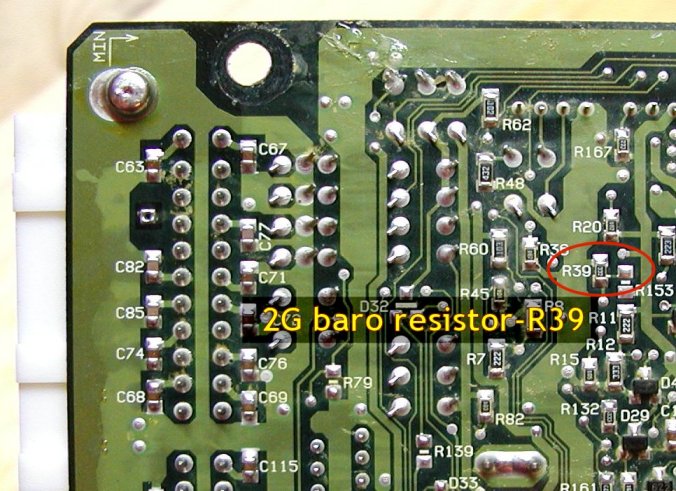This is an old revision of the document!
2G Baro Input Workaround
The baro input of the 2G ECU may not be compatible with aftermarket sensors. The 2G ECU has a 3.3K ohm pull-down resistor (R39), which may (probably will) put more load on the sensor than it can drive properly. For example, a GM 3-bar sensor can only drive this input to 1.76 volts at maximum pressure. The GM 3.3-bar sensor seems to have a bit lower output impedance and will drive the 2G baro input a little higher, but it's still unsuitable.
Short of removing R39 from the ECU (described below), the 2G baro input is suitable for use only with very low impedance sensors (even a 50-ohm output impedance will produce a little over 1% of voltage offset). Since most sensor designs have a resistor in series with its output for protection, the 2G ECU's baro sensor input is probably not suitable for use with most sensors.
The 1G baro input doesn't seem to suffer from this problem. It has an input impedance similar to the 2G MDP sensor input's 100K ohms).
12/19/2007: Instead of this process, you can also consider using the buffer circuit.
09/06/2009: If you happen to already have our GM MAF cable on your car, you can safely use the baro input of that cable because it has a built-in buffer circuit. Details are on the GM MAF Cable page.
Process
If you're really looking to maximize inputs, you can consider removing R39 from the underside of the ECU board. Best to use a couple small-tip soldering irons for this. Heat 'em up, apply one to each side of the resistor and slide it right off. I'm including a picture of the location of the resistor of interest below. I have verified that this does allow a GM 3bar to drive the baro input just fine. Once you have done that, you can use either the baro or the intake air temp inputs for whatever you want.


